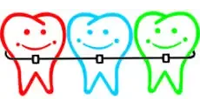Dr. Joseph H Thompson DDS MS INC.
The Home of BeeLine Aligners.
Preserve Your Smile with Personalized Retainers
Retainers
Orthodontic Retainer Care 101
So, your braces have been removed, and Dr. Thompson has given you a retainer to wear. Here is some information you need to know about retainer wear and care.
The retention phase of treatment is very important. Most people think that when braces are removed, that treatment is over. You are only halfway through treatment! The reason I say this is that retainers are used to hold the teeth in their new position so that slowly natural forces can take over. The goal is to have a stable occlusion (bite) that will stay in place when natural forces are placed on the teeth. That is the goal.
Teeth will try to move after your braces are removed, so retainers are needed to keep that from occurring. Also, retainers are used to allow natural forces to take over slowly. Therefore, retention check visits are very, very important. At a retention visit, Dr. Thompson watches for adverse tooth movement and makes adjustments either to the retainer or to your teeth. Yes, there are times when the tooth size needs to be adjusted. That procedure is called occlusal equilibration or interproximal enamel reduction. More on those topics later. A patient starts by wearing the retainer full-time, even during sleep. Eventually, Dr. Thompson will wean a patient off of their retainer once he concludes that the retainer is no longer needed.
What Is the Best Way to Take Care of Your Retainer?
First off, the best place to get a retainer is in your mouth, as Dr. Thompson has prescribed. If you don’t have it in your mouth, then keep the retainer in the retainer box given to you. But for the most part, wear your retainer!
Secondly, you need to take your retainer out of your mouth before eating and during sports. You can’t eat with a retainer in your mouth. There are a few exceptions, but for the most part, don’t wear your retainer while eating. Be careful where you place your retainer. For example, if you are eating lunch at school, take your retainer box with you and place it in your box. If you wrap the retainer in a paper napkin at lunchtime, you may be digging for your retainer in the trash can because you threw it away with your lunch trash. Place the retainer in your retainer box when not in your mouth. Also, don’t place a retainer in your pocket or purse, as the wires can easily be damaged or bent.
At home, keep the retainer up out of the reach of dogs. Dogs love retainers because, after a period of time in your mouth, the saliva smells so good to them. Dogs love to quickly chew them up, which results in the need for a new retainer. Remember, dogs have a keen sense of smell. Dogs can smell a retainer from a long distance, so place the retainer up high and out of their reach. They will search and try to get to your retainer.
Don’t let the saliva dry on your retainer. When you take your retainer out of your mouth, rinse it off so that the saliva will be gone. Dried saliva can slowly cut on your retainer and can make your retainer smell over time.
What Is That White Stuff on My Retainer?
All orthodontic retainers and appliances will accumulate plaque, calculus (tartar), and food particles over time, just like teeth do. So, when you brush your teeth, brush your retainer. Scrub the plastic part really hard, not bending the wires, until the plastic doesn’t feel sticky. It will feel clean when you get all of the debris off of it. You can use your regular toothbrush and toothpaste, or you can use a harder bristle brush, like a denture brush, and anti-bacterial soap. If you use soap, rinse it well and remove all the soap off the retainer. It can taste really bad. Once the calculus (tartar) builds up on your retainer, it can only be scraped off at the orthodontic office. Dr. Thompson will clean your retainer on your next visit if needed. Remember, to keep the retainer looking good, clean it every day and often.
My Retainers Have Been Contaminated, How Do I Disinfect and Sanitize Them?
If your retainer has been thrown into the trash can, your dog got a hold of it, or you dropped it on the floor, you need to disinfect and sanitize it. You can use a small amount of bleach and water (1:9 ratio) to disinfect. You could use anti-bacterial soap and water and scrub, scrub, scrub. However, do not use colored mouthwash to disinfect. Colored mouthwash can slowly change the color of your retainer. Never boil your retainer in hot water to disinfect it. Boiling a retainer will just cause it to warp and make it useless, and a new one will have to be made.
Lastly, when storing your retainer inside the retainer box, you do not need to keep the retainer soaking in water. Let the retainer dry by leaving the lid open. Bacteria can grow inside the retainer box. So, you need to keep the retainer box clean and disinfect it with bleach or soap at least once a month.
We hope this information about retainer care helps you retain that beautiful smile. If you have any questions, please email Dr. Joseph Thompson at info@yoursmilingfaces.com
- Mon - Thu
- -
- Fri - Sun
- Closed
By appointment only







Dr. Thompson is a West Virginia Medicaid Provider.

